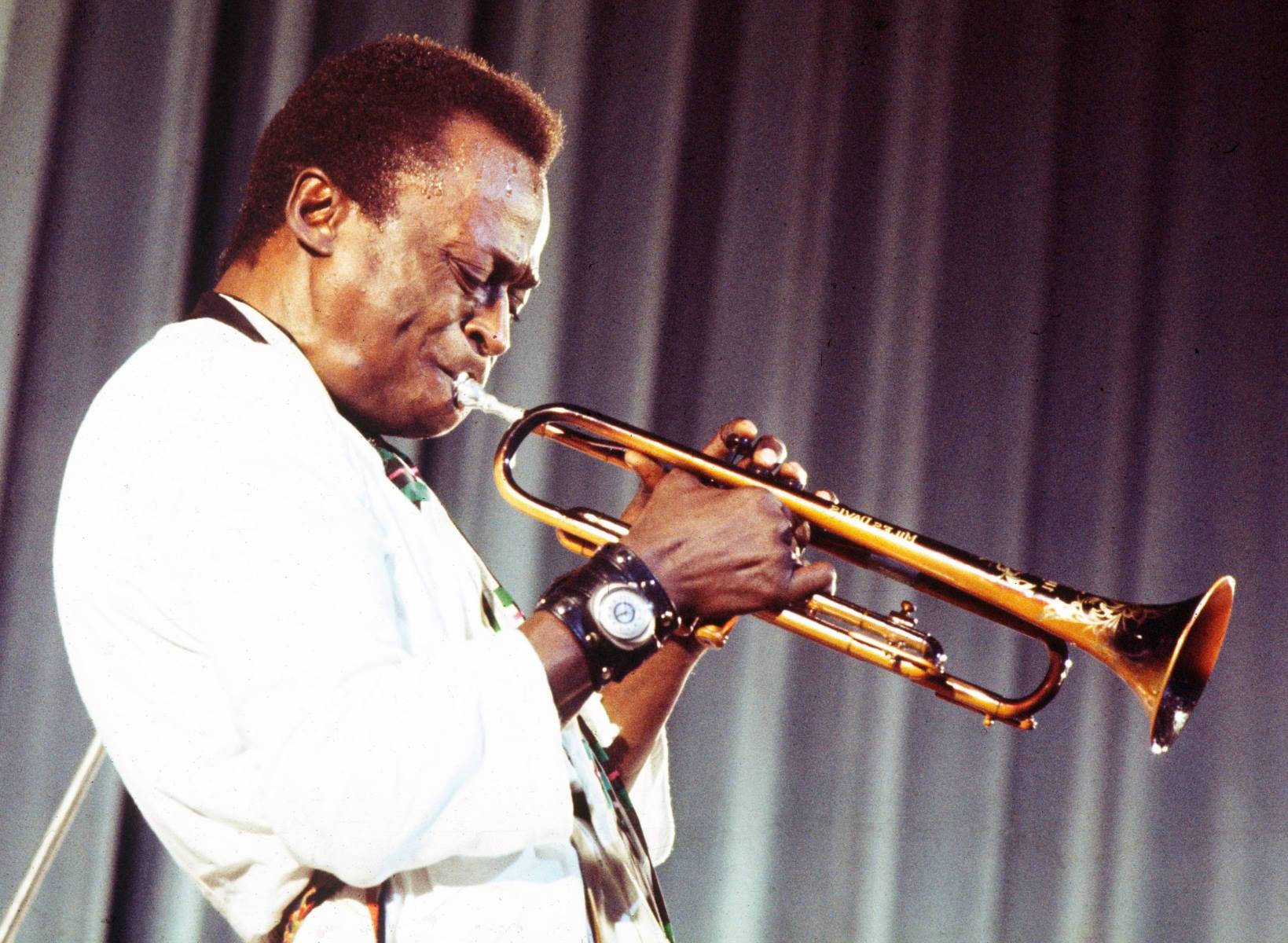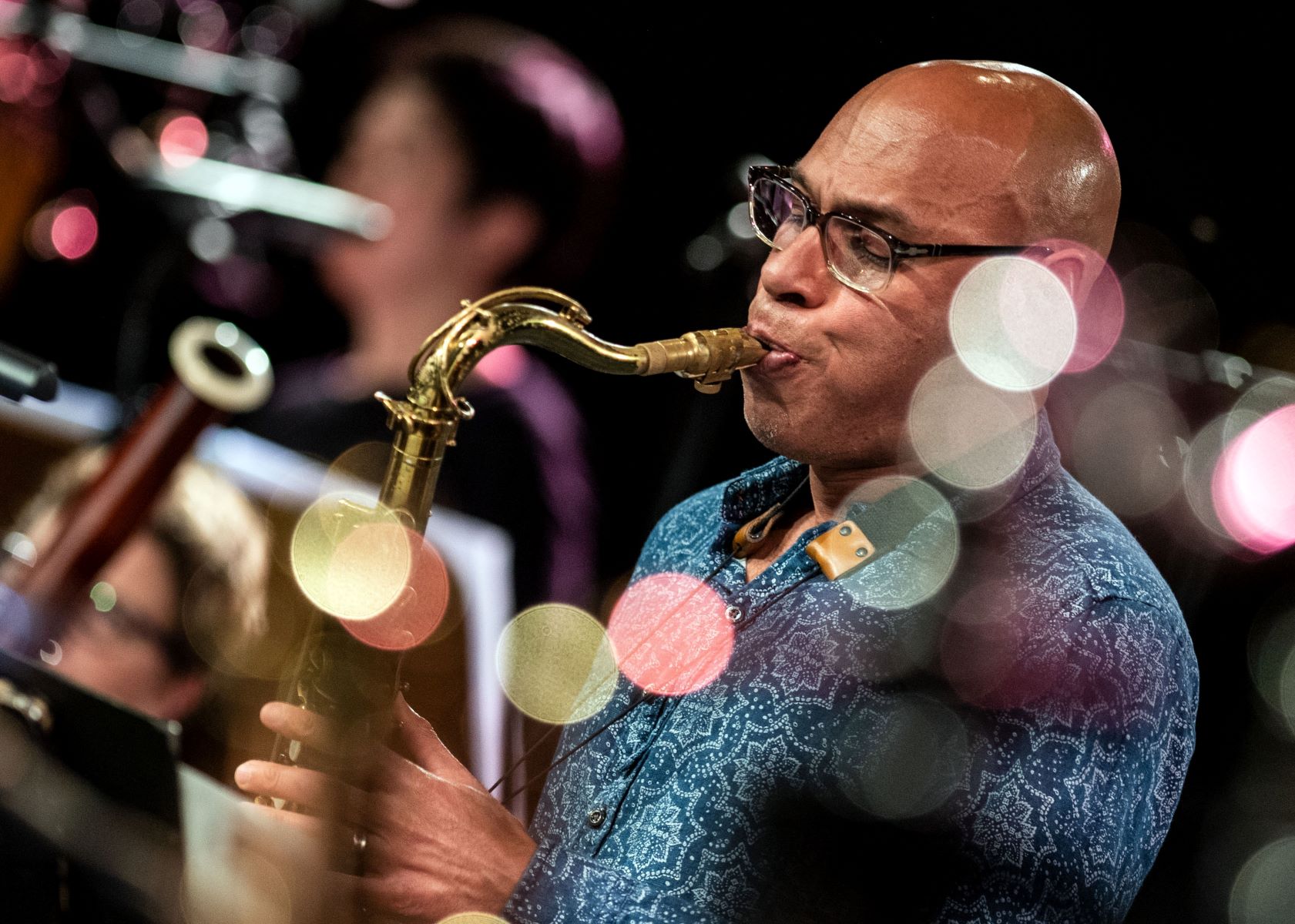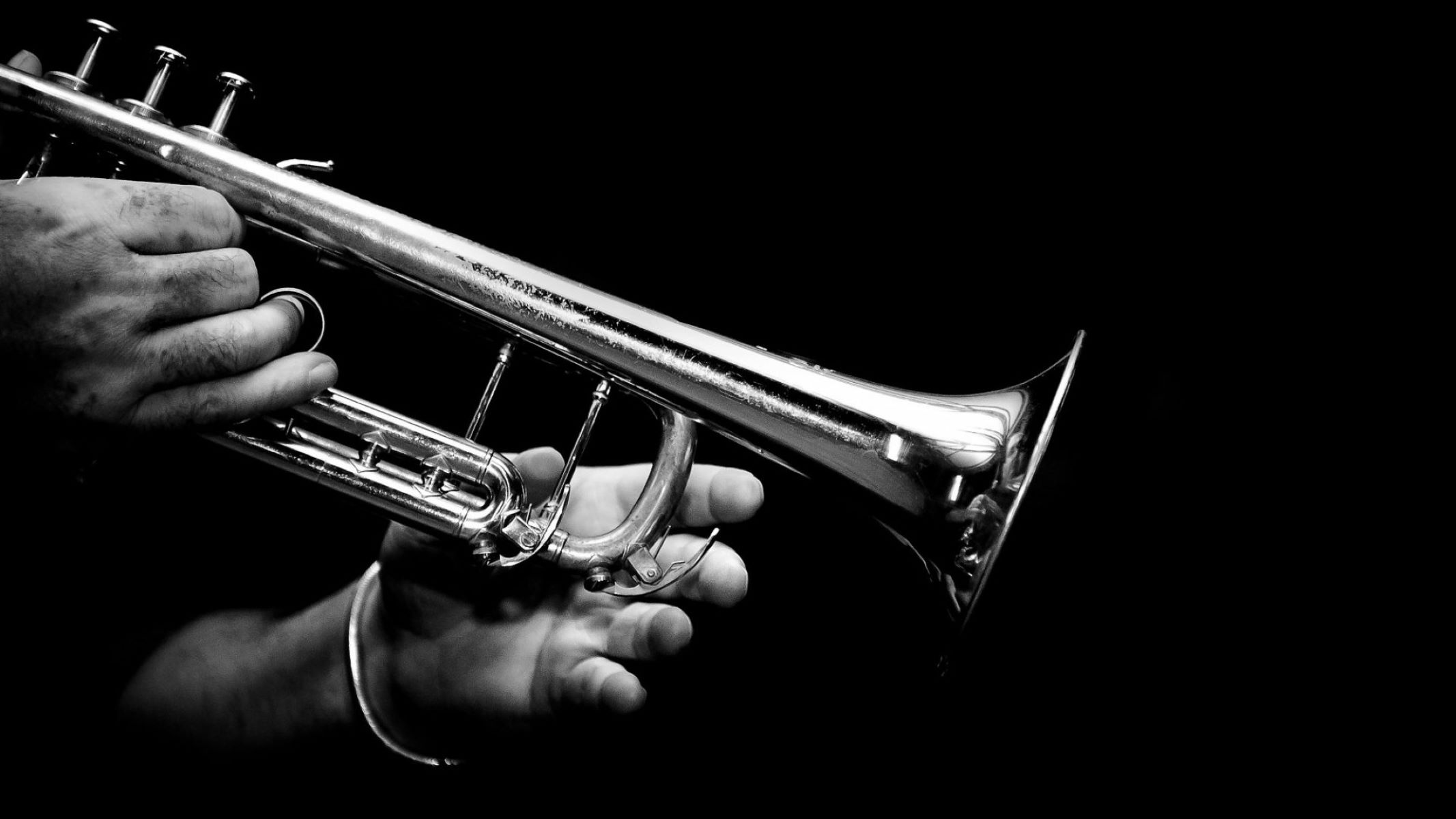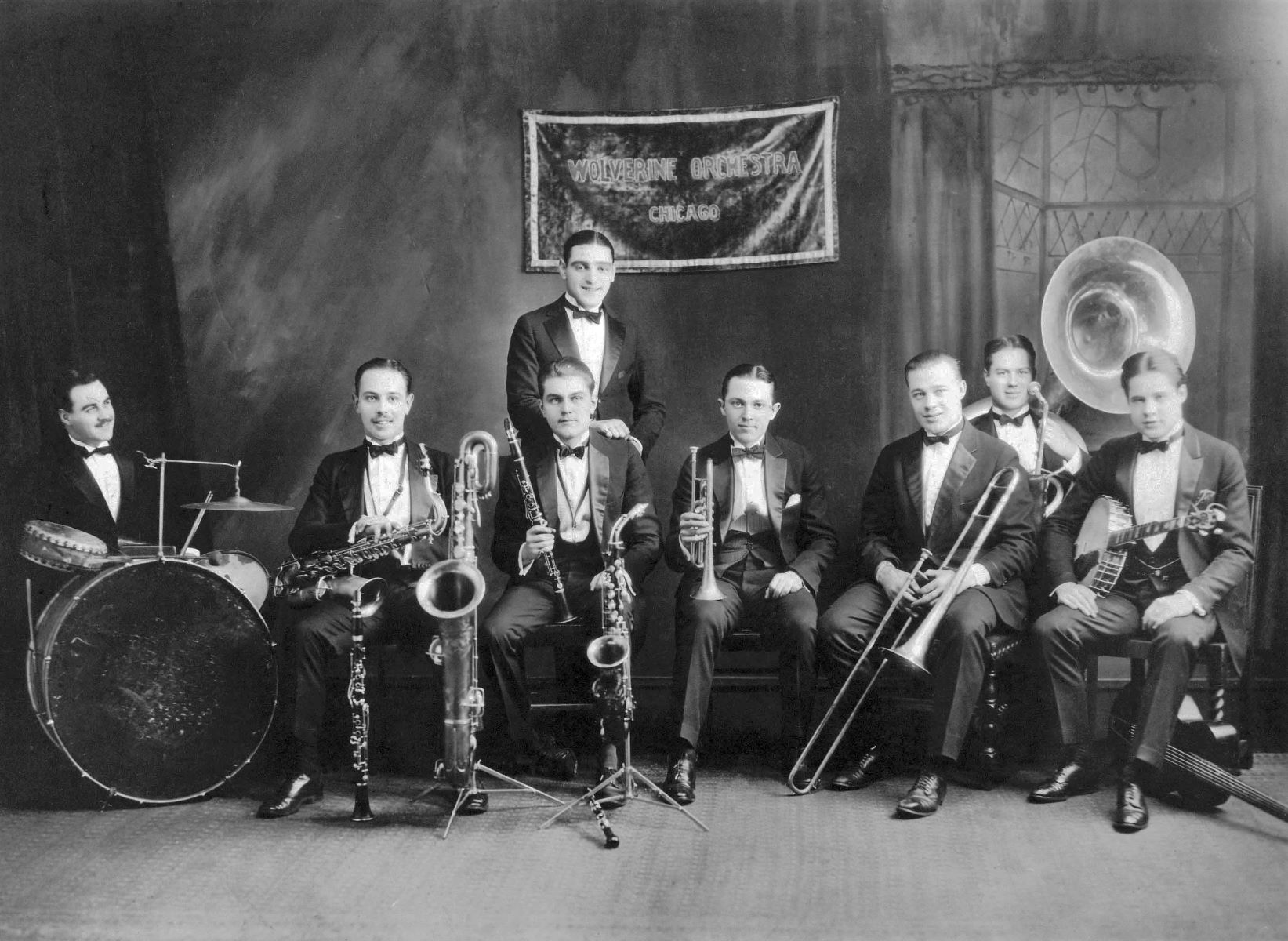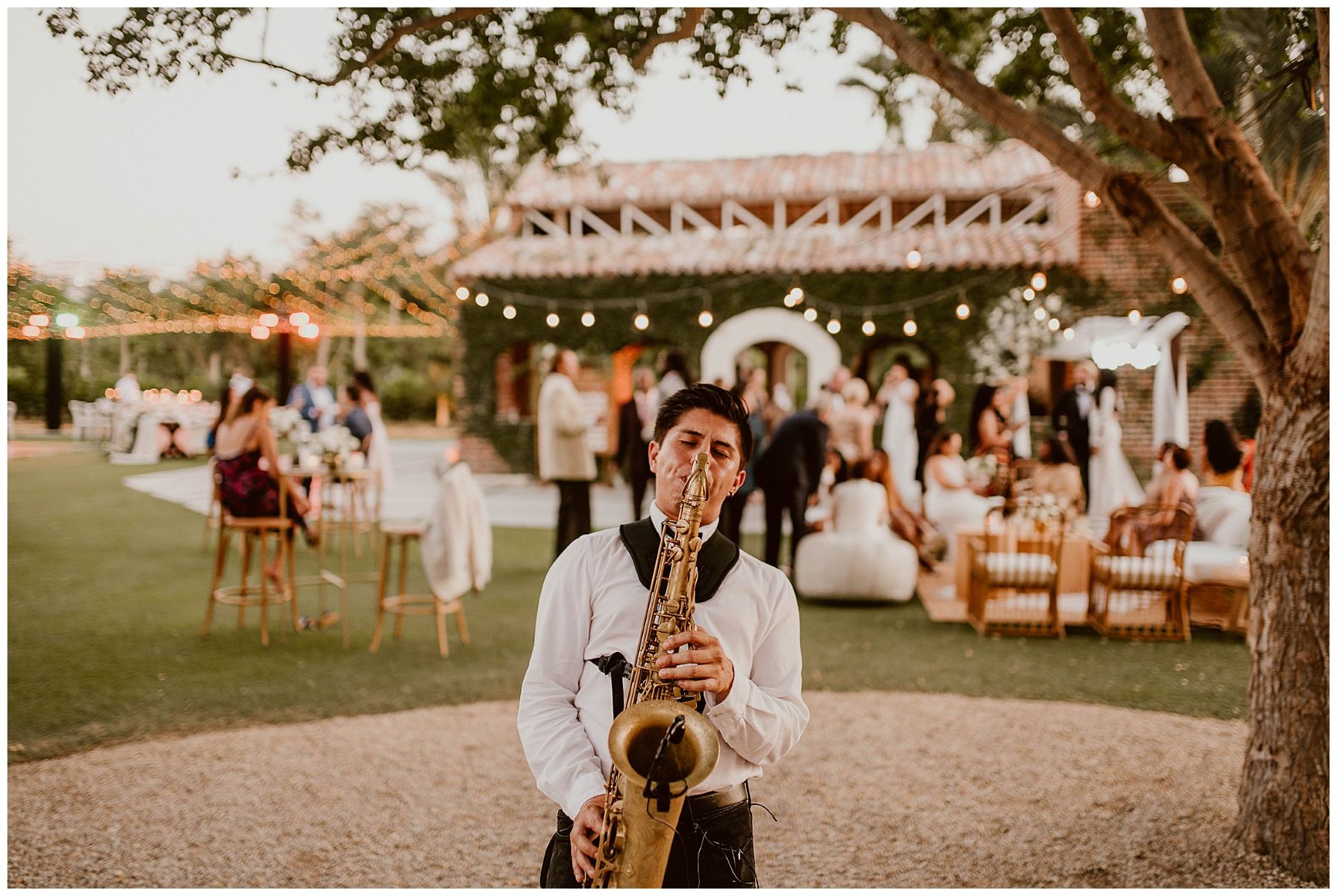Home>Production & Technology>Musician>How To Be A Jazz Musician
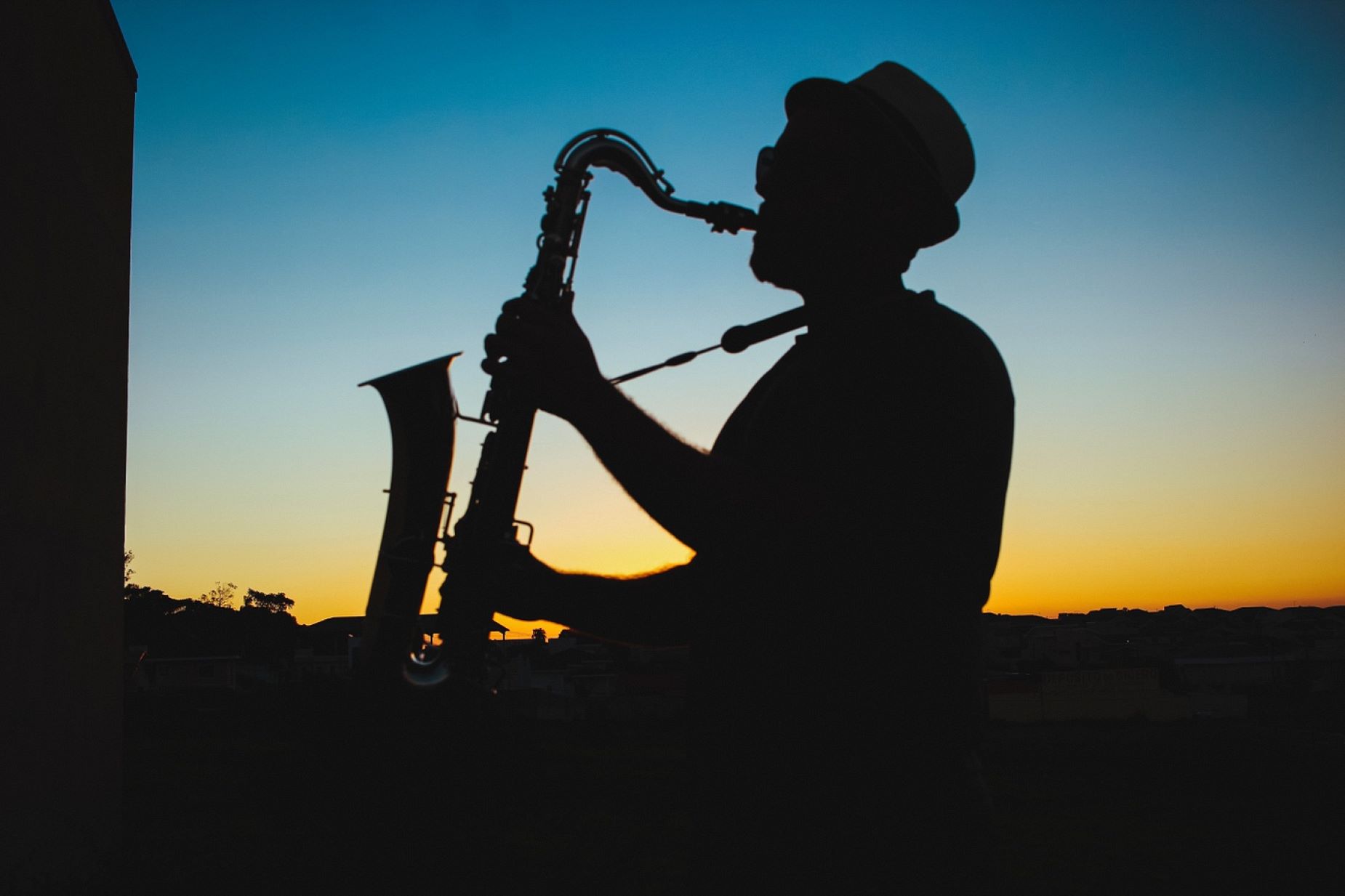

Musician
How To Be A Jazz Musician
Published: January 28, 2024
Learn the essential tips and tricks to become a successful jazz musician. Unlock your musical potential and start your musical journey today!
(Many of the links in this article redirect to a specific reviewed product. Your purchase of these products through affiliate links helps to generate commission for AudioLover.com, at no extra cost. Learn more)
Table of Contents
- Introduction
- Finding Your Instrument
- Learning the Basics
- Building Your Technique
- Developing Your Ear
- Understanding Jazz Theory
- Improvisation Techniques
- Studying Jazz Standards
- Playing with a Band
- Embracing the Jazz Community
- Recording Your Music
- Marketing Yourself as a Jazz Musician
- Resources for Jazz Musicians
- Conclusion
Introduction
Being a jazz musician is a truly unique and fulfilling experience. Jazz is a genre of music that is known for its improvisation, complex harmonies, and rhythmic intricacies. It originated in the early 20th century and has since evolved into various sub-genres, such as bebop, cool jazz, and fusion.
Playing jazz requires a deep understanding of music theory, impeccable technique, and the ability to think on your feet. It is a constantly evolving art form, and being a jazz musician means constantly pushing the boundaries of your creativity and musicality.
In this article, we will explore the journey of becoming a jazz musician, from finding your instrument to marketing yourself in the industry. Whether you’re a beginner or an experienced musician looking to dive into the world of jazz, this guide will provide you with the necessary knowledge and insights to embark on this exciting musical adventure.
So, grab your instrument, put on some classic jazz recordings, and let’s dive into the world of jazz!
Finding Your Instrument
Choosing the right instrument is the first step in becoming a jazz musician. While traditional jazz instruments include the saxophone, trumpet, piano, and drums, there are no strict rules when it comes to jazz. You can explore jazz on any instrument that speaks to you and allows you to express yourself.
If you’re unsure which instrument to pursue, consider your musical background and personal preferences. Do you enjoy the melodic nature of the saxophone or the rhythmic complexity of the drums? Are you drawn to the versatility of the piano or the vibrant sound of the trumpet?
It’s important to choose an instrument that resonates with you and that you feel passionate about. This enthusiasm will fuel your motivation to practice and improve.
Once you’ve chosen your instrument, it’s time to start learning the basics.
Before diving into the world of jazz, make sure you have a solid foundation in music theory and technique. Familiarize yourself with the instrument’s scale, chords, and basic playing techniques. Take lessons from a qualified instructor who specializes in your instrument and can guide you through the fundamentals.
Additionally, listening to and studying jazz recordings can provide invaluable inspiration and insights into the possibilities of your instrument within this genre. Analyze the phrasing, tone, and improvisational techniques of jazz musicians who play your instrument of choice.
Ultimately, finding your instrument is about finding your unique voice in jazz. Experiment with different instruments, explore different styles, and embrace the instrument that resonates with you the most.
Learning the Basics
Once you’ve chosen your instrument and built a solid foundation in music theory and technique, it’s time to delve into the basics of jazz. Here are some key areas to focus on:
- Listening to Jazz: Immerse yourself in jazz music by listening to recordings of jazz legends. Pay attention to the characteristics of the genre, such as swing rhythm, improvisation, and complex harmonies. Listening to different jazz styles will help you develop a deep understanding of the genre and inspire your own playing.
- Study Jazz Standards: Jazz standards are the bread and butter of the genre. These are well-known tunes that form the core repertoire of jazz musicians. Start by learning and analyzing classic standards like “Autumn Leaves” or “All the Things You Are.” Focus on understanding the chord progressions, melody, and different interpretations of the songs.
- Transcribe Jazz Solos: Transcribing jazz solos is an excellent way to develop your ear and understanding of jazz improvisation. Choose solos from your favorite jazz recordings and try to learn them by ear. Analyze the scales, phrasing, and melodic ideas used by the soloist, and incorporate them into your own playing.
- Practice Scales and Arpeggios: Scales and arpeggios are fundamental tools for improvisation in jazz. Practice major, minor, and dominant scales in all keys, as well as arpeggios. Work on your technique, accuracy, and fluidity when playing these foundational elements.
- Explore Rhythm: Jazz is known for its complex rhythmic patterns. Develop your rhythmic skills by practicing syncopated rhythms, swing feel, and various rhythmic subdivisions. Play along with rhythm tracks or metronomes to improve your sense of time and groove.
Remember, mastering the basics is essential for becoming a proficient jazz musician. Dedicate regular practice time to each of these areas, and gradually build upon them as you progress.
Next, we’ll discuss how to develop your technique to enhance your jazz playing.
Building Your Technique
Building a strong technique is crucial for any musician, and jazz is no exception. Developing technical proficiency on your instrument will allow you to express your musical ideas with ease and precision. Here are some tips for building your technique as a jazz musician:
- Warm-Up Exercises: Start your practice sessions with warm-up exercises that focus on finger dexterity, flexibility, and strength. Scales, arpeggios, and technical exercises specific to your instrument are great for developing your technique.
- Finger Independence: Work on exercises that promote finger independence, especially for instruments like the piano and guitar. Practice different fingering patterns and hand positions, gradually increasing the difficulty as your skills improve.
- Articulation and Tone: Explore various articulation techniques, such as legato, staccato, and accents, to add nuance and expressiveness to your playing. Experiment with different tones and timbres to develop your own unique sound.
- Speed and Agility: Jazz often requires fast and agile playing. Gradually increase the tempo of your technical exercises to improve your speed and control. Incorporate challenging runs and patterns into your practice routine to push your technical limits.
- Etudes and Technical Studies: Supplement your practice with etudes and technical studies specifically designed for jazz. These exercises will focus on jazz-specific techniques, such as chord voicings, scale patterns, and rhythmic variations.
- Transcriptions: Transcribing and learning solos by jazz masters will not only develop your ear and improvisational skills but will also expose you to their unique approaches to technique. Pay attention to their phrasing, articulation, and technical abilities, and incorporate aspects into your playing.
- Consistency and Patience: Building technique takes time and consistent practice. Be patient with yourself and commit to regular practice sessions. Break down challenging passages into smaller sections and work on them incrementally until you can perform them flawlessly.
Remember, technique is a means to an end – it should serve the music, not be the sole focus. Balance focused technical practice with broader musical exploration and creativity to become a well-rounded jazz musician.
Next, we’ll explore the importance of developing your ear in the world of jazz.
Developing Your Ear
Developing a well-trained ear is paramount for any jazz musician. Your ear will be your guide when it comes to improvisation, playing by ear, and understanding the nuances of jazz harmony. Here are some key steps to help you develop your ear:
- Ear Training Exercises: Incorporate ear training exercises into your practice routine. These can include identifying intervals, chord progressions, and melodic patterns by ear. Start with simple exercises and gradually increase the complexity as you become more comfortable.
- Sing and Play by Ear: Singing melodies and playing them on your instrument will strengthen your ear and improve your ability to translate musical ideas directly from your mind to your instrument. Start by singing simple melodies and gradually progress to more complex jazz phrasing and improvisation.
- Transcribe Jazz Recordings: Transcribing solos and melodies played by jazz masters is an excellent way to develop your ear. Listen to a passage repeatedly, and then try to play it on your instrument. Analyze the nuances of their phrasing, note choices, and rhythmic patterns, and incorporate them into your own playing.
- Learn Jazz Standards by Ear: Train your ear by learning jazz standards by ear, instead of relying solely on sheet music. Listen to recordings of different interpretations of the same song and try to figure out the chords and melodies on your instrument. This will strengthen your ability to recognize chord progressions, form, and harmonic nuances within the context of a song.
- Play with Other Musicians: Playing with other musicians, whether in a band or jam session, provides valuable opportunities to develop your ear. Listening and reacting to the musical ideas of others will help train your ear to respond and adapt in real-time.
- Transcribe Harmonies and Basslines: In addition to transcribing solos, focus on transcribing jazz harmonies and basslines. This will deepen your understanding of chord progressions, voicings, and bass movement, enhancing your ability to improvise harmonically rich and cohesive solos.
Remember, developing your ear is a continuous process. Dedicate time each day to ear training exercises and actively listen to jazz recordings. Over time, your ability to hear and interpret music will improve, ultimately heightening your improvisational skills and overall musicianship.
Next, we’ll explore the importance of understanding jazz theory in your journey as a jazz musician.
Understanding Jazz Theory
Understanding jazz theory is crucial for becoming a proficient jazz musician. Jazz is a highly harmonically complex genre that often involves intricate chord progressions and improvisation. Here are some key concepts to delve into:
- Chord Construction: Familiarize yourself with the construction of different chord types, such as major, minor, dominant 7th, and extended chords. Learn how to form these chords on your instrument and understand their function within a chord progression.
- Chord Progressions: Study common jazz chord progressions, such as ii-V-I and blues progressions. Analyze the relationship between chords and their function within a key, as well as the use of substitutions and reharmonizations to create harmonic interest.
- Modal Interchange and Substitutions: Learn about modal interchange, which involves borrowing chords from parallel keys to add color and variety to your progressions. Explore substitutions, such as tritone substitutions and extended chord substitutions, to create tension and resolution within your improvisations.
- Scales and Modes: Understand the relationship between scales and chords in jazz. Learn essential scales, such as major, melodic minor, and diminished scales, as well as modes like the Dorian, Mixolydian, and Lydian modes. Practice these scales in different keys and explore their application over specific chords.
- Harmonic Analysis: Analyze jazz standards and transcriptions to gain a deeper understanding of harmonic progressions. Identify the chord progressions, chord extensions, and the function of each chord within the context of the song. This analysis will help inform your improvisational choices.
- Rhythmic Considerations: Jazz theory goes beyond just harmony. Understanding rhythmic concepts like swing feel, syncopation, and various time signatures is essential for playing authentically in a jazz style. Study rhythmic patterns used by jazz greats and practice incorporating them into your playing.
Remember to approach jazz theory with curiosity and a willingness to explore. Take advantage of resources like theory books, online courses, and private lessons to deepen your understanding.
Understanding jazz theory will provide you with a solid foundation to confidently navigate chord progressions, communicate with other musicians, and create engaging and musically intriguing solos.
Next, let’s explore improvisation techniques to help you develop your own unique voice as a jazz musician.
Improvisation Techniques
Improvisation is at the heart of jazz music. It is the ability to create spontaneous and expressive melodies on the spot. Developing strong improvisation skills will allow you to showcase your musicality and personal style. Here are some techniques to help you become a confident jazz improviser:
- Learn Jazz Vocabulary: Study and internalize common jazz phrases, licks, and patterns. Listen to recordings of your favorite jazz musicians and transcribe their solos. Incorporate these melodic ideas into your own playing, gradually integrating them into your improvisations.
- Target Chord Tones: Focus on landing on chord tones (root, third, fifth, and seventh) when improvising over specific chords. These tones will create a strong connection to the underlying harmony and enhance your melodic phrasing.
- Explore Chromaticism: Experiment with incorporating chromatic passing tones and approach notes into your improvisations. Chromaticism adds tension and color to your lines, creating interesting melodic twists and turns.
- Rhythmic Variation: Jazz is known for its rhythmic complexity and syncopation. Develop your rhythmic vocabulary by practicing different rhythmic patterns and exploring syncopated rhythms in your solos. This will add energy and groove to your improvisations.
- Use Dynamics and Articulation: Vary the dynamics (soft vs. loud) and articulation (legato vs. staccato) in your playing to add expressiveness and shape to your improvisations. Experiment with different phrasing techniques, such as accents and falls, to create musical tension and release.
- Embrace Space: Occasionally leave space in your solos by intentionally pausing between phrases. This creates anticipation and adds a sense of musicality and breathing room to your improvisations.
- Explore Different Styles: Expand your jazz vocabulary by exploring different jazz styles, such as swing, bebop, modal jazz, and fusion. Each style has its unique characteristics and improvisational approaches, which will broaden your musical horizons.
- Experiment with Intervallic Playing: Break away from scalar playing by incorporating intervals, such as larger skips or repeating patterns, into your solos. This adds a fresh and unique sound to your improvisations.
Remember, developing your improvisation skills takes time and practice. Start by incorporating small elements into your playing and gradually build your improvisational toolkit. As you become more comfortable, push yourself to take risks and develop your own distinct voice as a jazz improviser.
Next, we’ll discuss the importance of studying jazz standards in your journey as a jazz musician.
Studying Jazz Standards
Studying jazz standards is a fundamental part of becoming a well-rounded jazz musician. Jazz standards are timeless compositions that serve as the foundation of the jazz repertoire. They provide a common language for musicians to communicate and improvise effectively. Here are some reasons why studying jazz standards is essential:
- Understanding Song Structure: Jazz standards have distinct song structures, such as AABA, ABAC, or blues forms. Studying these structures helps you develop a sense of form and arrangement, allowing you to confidently navigate through different sections of a song.
- Building a Repertoire: Jazz standards serve as a shared musical vocabulary among jazz musicians. By learning and memorizing a variety of jazz standards, you build a versatile repertoire that allows you to participate in jam sessions, gigs, or even create your own arrangements.
- Developing Improvisational Skills: Jazz standards provide an excellent framework for improvisation. Understanding the melody, harmony, and chord progressions of each song gives you a foundation to improvise over. Analyze the soloing styles of various jazz masters on these standards, allowing you to incorporate their ideas into your improvisation.
- Internalizing Chord Progressions: Jazz standards often feature common chord progressions, such as ii-V-I or blues progressions. By studying these progressions in different keys, you develop a deep understanding of harmonic movement, enabling you to navigate chord changes with ease.
- Exploring Different Styles: Jazz standards cover a wide range of styles, including swing, bossa nova, ballads, and blues. By studying standards from different eras and styles, you gain exposure to various rhythmic feels, melodic structures, and harmonic complexities.
- Developing Personal Style: Studying jazz standards allows you to see how different musicians interpret and reinterpret these songs. This exposure helps you develop your personal style as you incorporate and synthesize different approaches into your own playing.
- Enhancing Musical Communication: Jazz standards are a shared musical language among jazz musicians. The more standards you know, the easier it becomes to communicate and collaborate with other musicians on stage. This shared repertoire fosters musical conversation, improvisation, and synergy.
When studying jazz standards, start with the classic tunes, such as “Summertime,” “Autumn Leaves,” or “All the Things You Are,” and gradually expand your repertoire. Analyze different recordings, experiment with different arrangements, and embrace the challenge of making each standard your own.
Remember, studying jazz standards is not just about learning songs; it’s about immersing yourself in the rich tradition of jazz and building a strong musical foundation that will enable you to explore and create music in a confident and expressive manner.
Next, let’s explore the importance of playing with a band and the benefits it brings to your musical journey as a jazz musician.
Playing with a Band
Playing with a band is a transformative experience for any jazz musician. Collaborating and interacting with other musicians is not only musically enriching but also essential for your growth as a jazz performer. Here are some key benefits of playing with a band:
- Musical Communication: Playing with a band allows you to develop your musical communication skills. You learn to listen, respond, and interact with other musicians in real time. This collaboration enhances your ability to anticipate musical cues and create cohesive performances.
- Rhythm and Groove: Being part of a band helps you internalize the rhythm and groove of jazz music. You’ll learn to lock in with the drummer and bassist, creating a strong foundation for the rest of the band. Playing with others teaches you how to stay in sync and maintain a solid sense of time.
- Collective Improvisation: Jazz is known for its collective improvisation. Playing with a band gives you the opportunity to participate in dynamic improvisational exchanges. You’ll learn to interact with other soloists, comp behind them, and develop the skills to seamlessly transition between playing lead and supporting roles.
- Developing Band Arrangements: Collaborating with a band allows you to experiment with arranging jazz standards or original compositions. You’ll explore different chord voicings, rhythmic variations, and dynamics to create unique and compelling interpretations of the music.
- Problem-Solving Skills: When playing with a band, unexpected moments can arise, such as tempo changes, key modulations, or communication mishaps. These challenges help you develop problem-solving skills, adaptability, and the ability to recover gracefully, turning potential setbacks into musical opportunities.
- Stage Presence and Confidence: Performing with a band cultivates stage presence and builds confidence as a jazz musician. It allows you to showcase your skills, connect with the audience, and develop the charisma and stagecraft necessary to captivate listeners.
- Networking Opportunities: Playing with a band exposes you to a network of fellow musicians. Collaborating with other skilled musicians not only expands your musical horizons but also opens doors to new opportunities and potential gigs.
Whether it’s joining a local jam session, forming a small ensemble, or playing in a big band, seeking opportunities to play with others is essential for your development as a jazz musician. Embrace the teamwork, camaraderie, and creative possibilities that come with being part of a band.
Next, let’s explore the importance of embracing the jazz community and finding your place within it.
Embracing the Jazz Community
Embracing the jazz community is a pivotal aspect of being a jazz musician. The jazz community is a vibrant and supportive network of fellow musicians, enthusiasts, educators, and venues that fosters growth, collaboration, and appreciation for the art form. Here are some reasons why it’s important to embrace the jazz community:
- Inspiration and Mentorship: Engaging with the jazz community exposes you to a wealth of knowledge, experience, and talent. It provides opportunities to learn from seasoned musicians who can serve as mentors and sources of inspiration.
- Collaborative Opportunities: The jazz community offers numerous opportunities for collaboration. Jam sessions, workshops, and performances provide a platform to connect with other musicians, exchange musical ideas, and explore new creative ventures.
- Sharing and Feedback: Within the jazz community, you can share your music and receive valuable feedback from knowledgeable peers. This feedback helps you refine your skills, refine your musical approach, and grow as an artist.
- Learning and Education: Jazz festivals, clinics, and workshops organized by the jazz community offer the chance to learn from renowned artists and educators. These events provide a wealth of knowledge, techniques, and perspectives that can elevate your musical understanding and abilities.
- Networking and Gig Opportunities: Engaging with the jazz community expands your network and opens doors to potential gig opportunities. Building relationships with other musicians, booking agents, and venue owners enhances your chances of securing performances and collaborating on projects.
- Preserving Jazz Tradition: By actively participating in the jazz community, you contribute to the preservation and evolution of the jazz tradition. Supporting live jazz performances, attending concerts, and promoting the art form helps ensure its continued vibrancy and relevance.
- Creating a Support System: The jazz community provides a support system of like-minded individuals who understand the challenges and joys of being a jazz musician. This network offers encouragement, advice, and camaraderie, promoting personal and artistic growth.
Embrace the jazz community by attending jazz concerts, jam sessions, and festivals. Engage with fellow musicians through collaborations and networking events. Seek out jazz education opportunities, like masterclasses or workshops, to expand your knowledge and skills. Connect with jazz organizations, online forums, and social media groups to stay connected and informed.
Remember, being a part of the jazz community enriches your musical journey, exposes you to new possibilities, and fosters a sense of belonging within a supportive and passionate community.
Next, let’s discuss the importance of recording your music and the role it plays in showcasing your talent as a jazz musician.
Recording Your Music
Recording your music is an essential step in showcasing your talent and sharing it with a wider audience. Whether it’s a professional studio recording or a DIY project, recording your music offers a range of benefits and opportunities. Here’s why recording is important for jazz musicians:
- Promoting Your Artistry: Recording your music allows you to create a portfolio of your work, showcasing your unique style and musical vision. It gives you the opportunity to share your talent with a broader audience, reaching listeners who may not be able to experience your live performances.
- Documenting Your Progress: Recording your music provides a means to track your growth and progress as a jazz musician. By revisiting recordings over time, you can reflect on your development, identify areas for improvement, and celebrate your achievements.
- Creating a Professional Image: A well-produced recording demonstrates your professionalism and commitment to your craft. It can serve as a calling card when approaching venues, promoters, or other musicians for potential collaborations or gigs.
- Collaboration Opportunities: Recording your music opens doors to collaboration with other musicians, producers, and recording engineers. It allows you to collaborate remotely with artists from around the world or to capture spontaneous improvisational moments with fellow musicians in the studio.
- Original Composition Exploration: Recording provides an avenue to explore your own compositions. It allows you to bring your musical ideas to life and share them with others, enabling you to further develop your skills as a composer and arranger.
- Jazz Historiography: Recordings contribute to the preservation and documentation of the jazz genre. By recording your own music, you become a part of the ongoing jazz historiography, adding to the collective repertoire of jazz recordings for future generations to study and enjoy.
- Marketing and Promotion: Recordings can serve as valuable marketing tools, helping to promote your music and attract new opportunities. Share your recordings on various platforms, such as streaming services, social media, and your website, to increase your visibility and connect with a wider audience.
When recording your music, consider your budget, resources, and goals. Whether you choose to work with a professional recording studio or opt for DIY methods, focus on capturing the essence and authenticity of your performance. Remember that quality trumps quantity – prioritize the overall sound and production value of your recordings.
Utilize the power of digital distribution to make your recordings accessible to a global audience. Leverage social media platforms and engage with your listeners to foster a community around your music.
Recording your music is an opportunity to share your artistic expression with the world, connect with fellow musicians and listeners, and leave a lasting impact in the jazz realm.
Next, we’ll explore the importance of marketing yourself as a jazz musician and strategies to promote your music effectively.
Marketing Yourself as a Jazz Musician
Marketing yourself effectively is crucial for gaining visibility, attracting opportunities, and establishing a successful career as a jazz musician. Here are some strategies to help you effectively market yourself:
- Create an Online Presence: Build a professional website and establish a presence on social media platforms dedicated to music. Showcase your music, share updates, and engage with your audience. Use platforms like Soundcloud, Bandcamp, or YouTube to share recordings and performances.
- Promote Your Music: Utilize various online music platforms to distribute and sell your music. Upload your recordings to streaming services such as Spotify, Apple Music, and Amazon Music, ensuring that your music reaches a wide audience.
- Write a Compelling Biography: Craft a concise and engaging biography that highlights your musical journey, influences, and accomplishments. Include relevant details such as education, notable performances, and collaborations.
- Produce Professional Press Materials: Create high-quality press materials, including professional photos, press releases, and promotional videos. These materials are essential when reaching out to venues, festivals, and promoters, or when seeking media coverage.
- Network and Collaborate: Attend jazz events, festivals, and jam sessions to connect with fellow musicians, industry professionals, and potential collaborators. Strengthening your network can lead to performance opportunities, recommendations, and valuable connections within the jazz community.
- Build Relationships with Local Venues: Approach local jazz clubs and venues to inquire about performance opportunities. Showcase your professionalism, provide samples of your music, and demonstrate how you can contribute to their programming.
- Seek Media Exposure: Approach local newspapers, radio stations, and online publications to feature your music or interview you as a jazz artist. This exposure helps to expand your reach and build credibility.
- Offer Music Workshops and Lessons: Leverage your musical expertise by offering workshops, masterclasses, or private lessons. Sharing your knowledge not only generates income but also establishes you as an authority in the jazz community.
- Collaborate with Visual Artists: Partner with visual artists, such as painters or photographers, to create unique collaborations. These collaborations can result in joint exhibitions or multimedia experiences that attract a diverse audience.
Remember to consistently refine your skills, develop your musical identity, and stay true to your artistic vision. Marketing yourself effectively requires a balance between self-promotion and maintaining genuine connections within the jazz community.
Lastly, always strive for excellence in your craft, deliver memorable performances, and let your passion for jazz shine through your music. With a strategic marketing approach and a captivating musical voice, you can pave a path for success in the dynamic world of jazz.
Next, we’ll provide some resources for jazz musicians to further enhance their knowledge and skills.
Resources for Jazz Musicians
As a jazz musician, it’s important to continuously seek out resources that can enhance your knowledge, skills, and overall musical journey. Here are some valuable resources to consider:
- Books and Literature: Explore jazz theory, improvisation, composition, and the biographies of jazz legends through books and literature. Some notable titles include “The Jazz Theory Book” by Mark Levine, “How to Improvise” by Hal Crook, and “Miles: The Autobiography” by Miles Davis.
- Online Courses and Lessons: Take advantage of online platforms that offer jazz courses and lessons taught by renowned jazz musicians. Websites like Coursera, MasterClass, and Udemy offer a variety of courses that cover various aspects of jazz, from improvisation techniques to jazz history.
- Jazz Festivals and Workshops: Participate in jazz festivals and workshops to immerse yourself in the jazz community, learn from industry professionals, and experience live performances. Prominent jazz festivals include the Newport Jazz Festival, Montreux Jazz Festival, and the North Sea Jazz Festival, among many others.
- Jazz Education Programs: Consider enrolling in jazz education programs offered by music institutions or universities. These programs provide comprehensive jazz education, ensemble playing opportunities, and mentorship from experienced faculty members.
- Transcription Tools: Utilize transcription tools and software to aid in the process of transcribing solos. Tools like Transcribe! and Amazing Slow Downer can help you slow down, loop, and analyze jazz recordings, making the transcription process more efficient.
- Jazz Recordings: Expand your jazz vocabulary by listening to recordings of influential jazz musicians. Explore the classics, such as recordings by Louis Armstrong, Duke Ellington, Charlie Parker, and John Coltrane, as well as contemporary jazz artists who are pushing the boundaries of the genre.
- Networking and Jazz Associations: Join jazz associations and networks to connect with other jazz musicians, educators, and enthusiasts. Organizations like the Jazz Education Network (JEN) and the International Association for Jazz Education (IAJE) offer resources, networking opportunities, and access to jazz events and conferences.
- Online Forums and Communities: Engage in online jazz forums and communities to share ideas, ask questions, and connect with jazz musicians from around the world. Websites like Jazz Guitar Online and Sax on the Web host forums where you can interact and learn from fellow musicians.
- Music Software and Apps: Explore music software and apps designed specifically for jazz musicians. Resources like iReal Pro, for example, provide a vast library of jazz standards with backing tracks for practice and performance.
Remember, constantly seeking out resources and expanding your musical knowledge is a lifelong journey. Keep an open mind, experiment with different resources, and adapt them to your specific needs and learning style.
The resources listed here are just a starting point. Continually explore and discover new avenues to enhance your skills, deepen your understanding of jazz, and fuel your passion for this vibrant genre.
Next, let’s wrap up this comprehensive guide to becoming a jazz musician.
Conclusion
Congratulations! You have now embarked on a comprehensive journey to becoming a jazz musician. Throughout this guide, we explored various aspects of the jazz world, from finding your instrument and learning the basics to developing your technique, understanding jazz theory, and embracing the jazz community.
We discovered the importance of building a strong foundation in music theory and technique, delved into the art of improvisation, and explored the rich repertoire of jazz standards. We also discussed the significance of playing with a band, recording your music, and marketing yourself as a jazz musician.
As you continue your journey, remember that dedication, consistent practice, and a passion for the music are essential. Embrace the learning process, experiment with different styles and techniques, and strive to develop your own unique voice in the world of jazz.
Never stop seeking new resources and opportunities to expand your knowledge and skills. Engage with the jazz community, attend performances, collaborate with fellow musicians, and stay connected to the ever-evolving world of jazz.
May this guide serve as a roadmap, giving you the necessary tools and insights to navigate the exciting and dynamic world of jazz. Now, it’s time to pick up your instrument, immerse yourself in the music, and let your creativity soar. Best of luck on your journey as a jazz musician!

